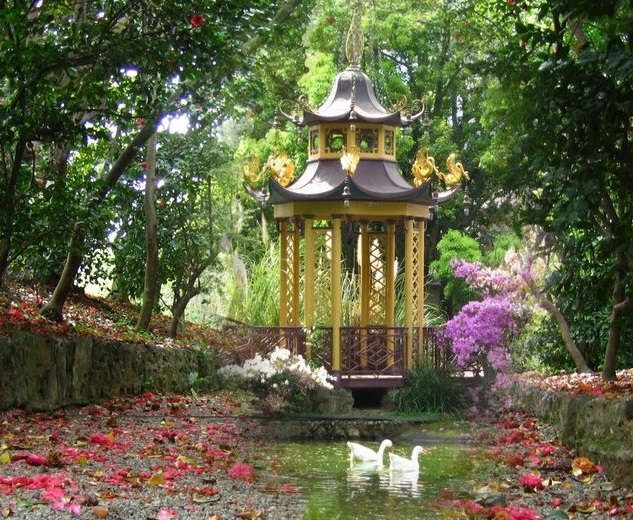The Time of the Camellias

An explosion of colours and scents to celebrate spring in the Genoese park of Villa Durazzo Pallavicini.
If the Park of Villa Durazzo Pallavicini is an open-air theatre, as Michele Canzio actually thought of it, then the camellias can be considered the protagonists.
They have been blooming and withering for a century and a half, always sparking poets’ imagination, the sweet words of lovers strolling along the avenues, and the admiration of those visiting the park. The only difference, compared to the time of its creation, is that the camellias bloom earlier: due to the milder climate, the natural spectacle is earlier this year than in the past. It is worth diving into this riot of scents and colours.
The camellias are included in a relatively long stretch from the Mediterranean Oasis to the next scene at Lago Vecchio. They are a major botanical attraction, probably unique in Europe.
The park is home to one of the largest collections of centuries-old camellias that have taken on an arboreal bearing over time, giving the camellia avenue a fascinating woodland character. Historical documents show that the first person to obtain the beautiful plants was Ignazio Pallavicini at the beginning of the last century.
The camel grove was established later, in 1856, on the present site. By the end of the century, there were already 27 cultivars.
A research event took place ten years ago following the first Camellia Exhibition in Genoa and since then many investigations have been carried out that have confirmed the existence of very rare types. Each cultivar has a particular name, often a dedication. In Pegli, you can come across the camellias “Duchesses de Nemour”, “Fanny Durazzo”, “Count di Cavour”, “Fiammetta Bianchi”, “Christopher Columbus”, “Diamantin”, “Bella Romana”, “Countess Woronzoff”, “Marquise Teresa D’Ambra”, or “Omar Paschà” and many others. The undisputed star is the “Nina Durazzo” camellia, white with a pink hint, much appreciated by botany enthusiasts and enigmatic because it has not been possible to explain who the woman (or child) to whom the flower is dedicated was.
During the flowering period, as many as 160 specimens of camellia japonica make up the camellia avenue.



